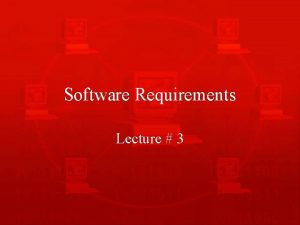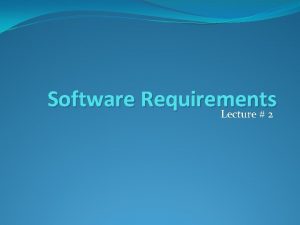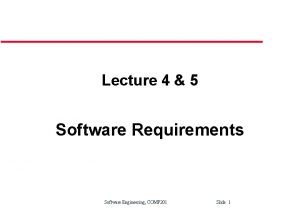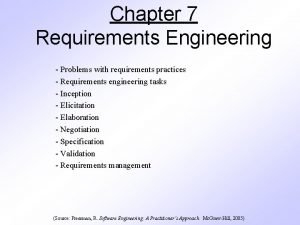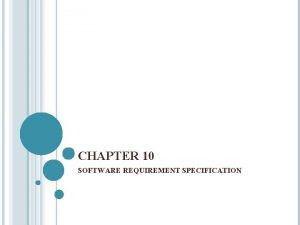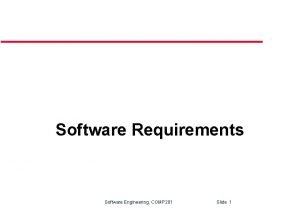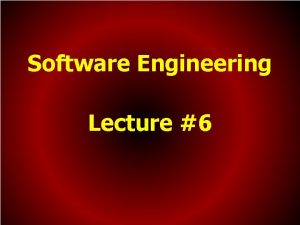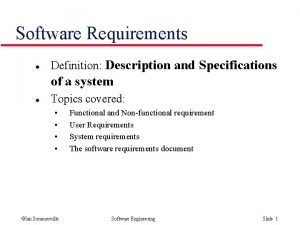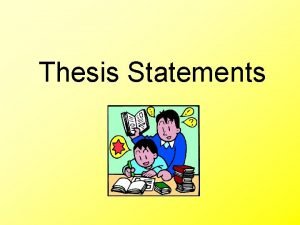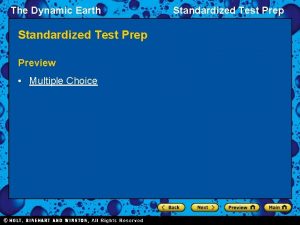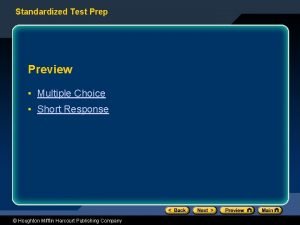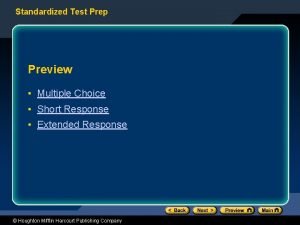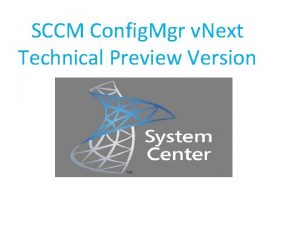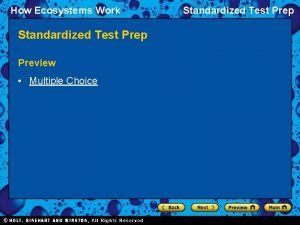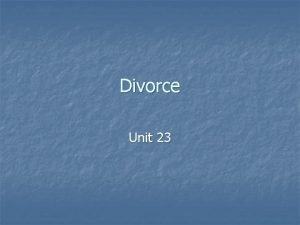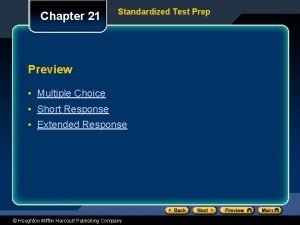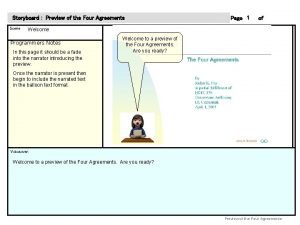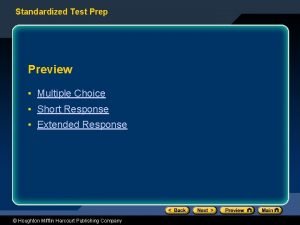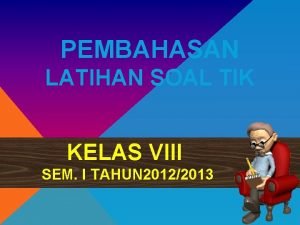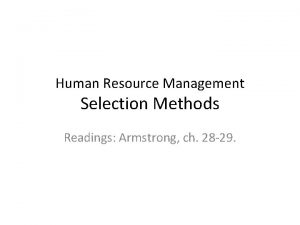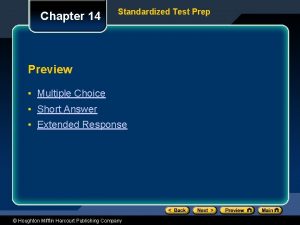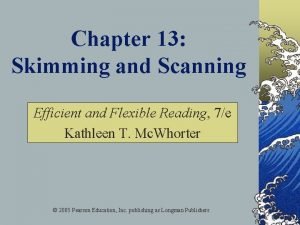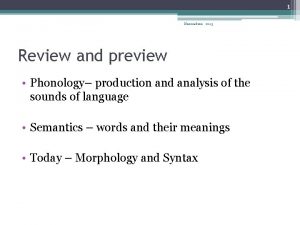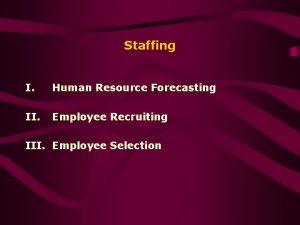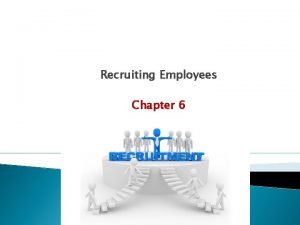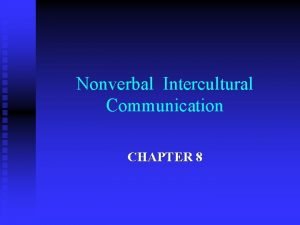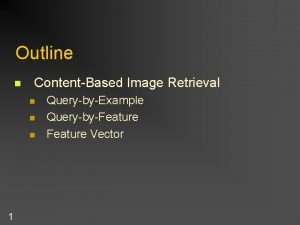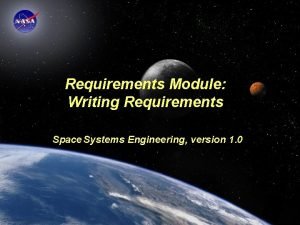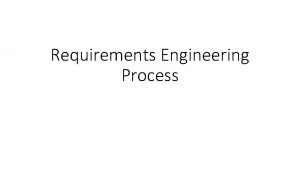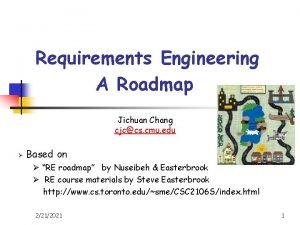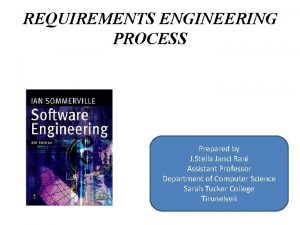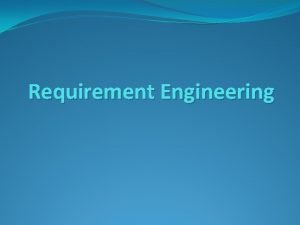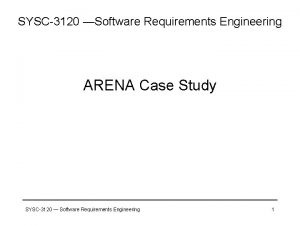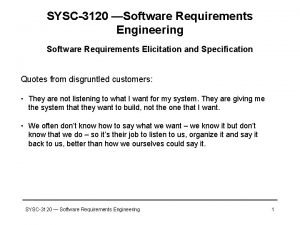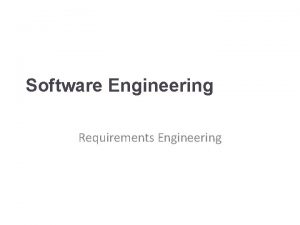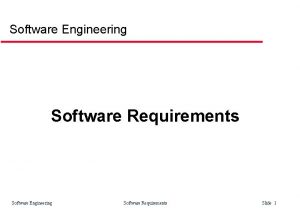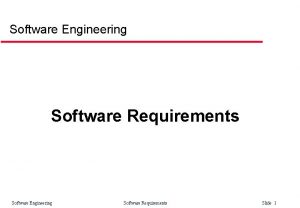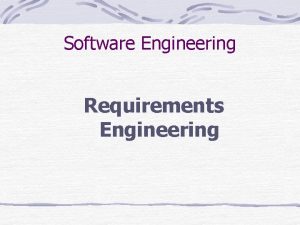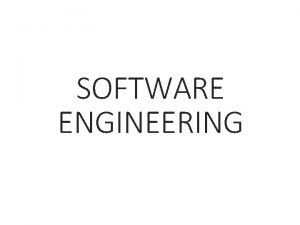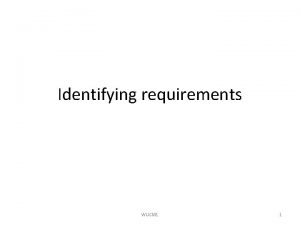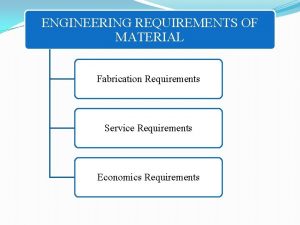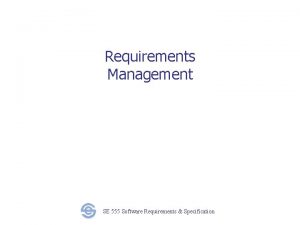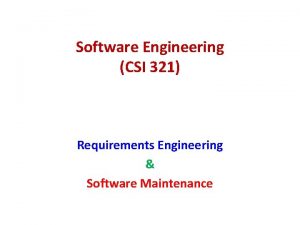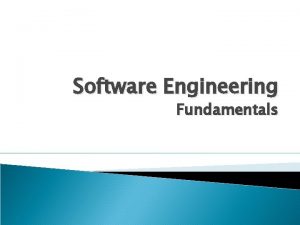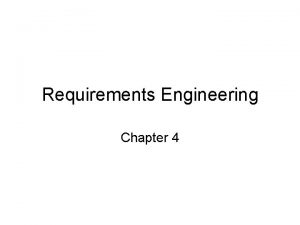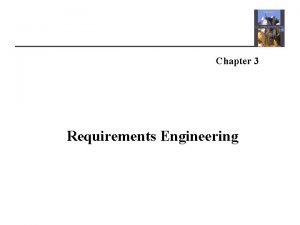SYSC3120 Software Requirements Engineering Software Engineering Preview SYSC3120


![Definitions of SW Engineering • Software Engineering [IEEE-93]: – The application of a systematic, Definitions of SW Engineering • Software Engineering [IEEE-93]: – The application of a systematic,](https://slidetodoc.com/presentation_image_h/a30cdefc7a5e766381903363d95391b1/image-3.jpg)











![Historical perspective of SW Engineering • Read the opening sentence in your textbook [Dutoit] Historical perspective of SW Engineering • Read the opening sentence in your textbook [Dutoit]](https://slidetodoc.com/presentation_image_h/a30cdefc7a5e766381903363d95391b1/image-15.jpg)


















![The Software Process • Software Engineering [IEEE-93]: – The application of a systematic, disciplined, The Software Process • Software Engineering [IEEE-93]: – The application of a systematic, disciplined,](https://slidetodoc.com/presentation_image_h/a30cdefc7a5e766381903363d95391b1/image-34.jpg)



















- Slides: 53

SYSC-3120 —Software Requirements Engineering Software Engineering Preview SYSC-3120 — Software Requirements Engineering 1

Software Engineering Preview • Definitions • Software Failures • History and Context • Software Development Myths • Principles • Software Development Processes • Software Development Tools • Summary SYSC-3120 — Software Requirements Engineering 2
![Definitions of SW Engineering Software Engineering IEEE93 The application of a systematic Definitions of SW Engineering • Software Engineering [IEEE-93]: – The application of a systematic,](https://slidetodoc.com/presentation_image_h/a30cdefc7a5e766381903363d95391b1/image-3.jpg)
Definitions of SW Engineering • Software Engineering [IEEE-93]: – The application of a systematic, disciplined, quantifiable approach to the development, operation, and maintenance of software; that is, the application of engineering to software. – Highlights the difference between programming and software engineering • Canadian Standards Association: – “The systematic activities involved in the design, implementation and testing of software to optimize its production and support” SYSC-3120 — Software Requirements Engineering 3

Definitions of SW Engineering (cont. ) • Parnas (1987): – “Multi-person construction of multi-version software” – Software Engineering means the construction of quality software with a limited budget and a given deadline in the context of constant change • Lethbridge (2004): – “Software engineering is the process of solving the customers’ problems by the systematic development and evolution of large, highquality software systems within cost, time and other constraints. ” SYSC-3120 — Software Requirements Engineering 4

Definitions of SW Engineering: Conclusion • Important notions to remember: – Systematic, disciplined, quantifiable – Development, operation, and maintenance (not only construction/coding) – Quality – Constraints SYSC-3120 — Software Requirements Engineering 5

The Engineer in SW Engineering • Engineers design products following well-accepted practices which normally involve the application of science, mathematics and economics • As professionals, engineers assume a duty of personal responsibility to the public and society, and a code of ethics. – The society includes the customer (ie. meeting economic and time constraints) SYSC-3120 — Software Requirements Engineering 6

Scope of SW Engineering • SE is part of a much larger system design activity – Telephone switching systems, power plants, banking systems, hospital admin systems, aircraft • Doing SE right requires a much larger look at system engineering issues – entities and activities within the system, its boundary and interface with other systems and users • Understanding the application and user needs is key – Decide what activity should be supported by the system and how – Having a technical understanding of the system to be developed is not enough – Many domains, where very different software systems must be developed, with emphasis on different priorities: • time-to-market (telecom), safety (aerospace, NASA Shuttle), maintainability (telecom, banking) SYSC-3120 — Software Requirements Engineering 7

Importance of SW Engineering • Software is pervasive in our lives, in most systems surrounding us - we take it for granted! • US $500 Billion world-wide in 1995 • This includes critical systems that affect our well-being and our lives • Many reported stories of poor software engineering practices leading to catastrophes SYSC-3120 — Software Requirements Engineering 8

Software Quality • External Characteristics (of interest to stakeholders) – – – Usability Efficiency Reliability Maintainability Reusability Short term Engineering is tradeoffs Long term • Internal Characteristics (impact maintainability and reliability) – Comments – Code Complexity: Nesting depth, branches, complex programming – Modularity SYSC-3120 — Software Requirements Engineering 9

Software Engineering Stakeholders • Developers are only one of the stakeholders in a SE Project • Users: Use the end-product – Appreciate software that is easy to learn, improves their working conditions • Customers: Order and pay for the software – Increase profits or run business better • Development Managers: Manage the developers – Please the customer while spending the least money. • One person may take on multiple roles. SYSC-3120 — Software Requirements Engineering 10

Activities Involved in SE • Knowledge acquisition: – Understand the application domain, the system requirements – Knowledge acquisition is not sequential, as a single piece of additional information can invalidate complete models • Modeling (the blue-print of the software engineer): – Way to cope with complexity by raising the level of abstraction, e. g. , UML • Problem solving: – Find an acceptable solution within constraints (budgets and timelines) – Find -> search -> experiment (i. e. , compare alternatives, evaluate) • Documentation: – The rationale behind decisions need to be captured, in order to be able to deal with change SYSC-3120 — Software Requirements Engineering 11

Software Engineering Preview • Definitions • Software Failures • History and Context • Software Development Myths • Principles • Software Development Processes • Software Development Tools • Summary SYSC-3120 — Software Requirements Engineering 12

Examples of SE Failures • Patient Protection and Affordable Care Act (a. k. a. Obama. Care, 2013): – Incorrect functionality, unable to handle the load due to poor specifications, flawed design, poor coding, poor testing, security flaws, time constraints. • Soyuz spacecraft’s descent from the ISS on May 3 rd 2003 – Halfway back to Earth, for no apparent reason, the computer had suddenly begun searching for the ISS as if to dock with it. • Ariane 5 Flight 501: – The space rocket was destroyed. Cause: poor specifications, usage testing, and exception handling. • Therac-25: – Radiation therapy and X-ray machine killed several patients. Cause: unanticipated, non-standard user inputs. • NASA mission to Mars (Mars Climate Orbiter Spacecraft, 1999): – Incorrect conversion from imperial metric leads to loss of Mars satellite US study (1995): – 81 billion US$ spend per year for failing software development projects • Despite many success stories, there is much room for improvement. SYSC-3120 — Software Requirements Engineering 13

Software Engineering Preview • Definitions • Software Failures • History and Context • Software Development Myths • Principles • Software Development Processes • Software Development Tools • Summary SYSC-3120 — Software Requirements Engineering 14
![Historical perspective of SW Engineering Read the opening sentence in your textbook Dutoit Historical perspective of SW Engineering • Read the opening sentence in your textbook [Dutoit]](https://slidetodoc.com/presentation_image_h/a30cdefc7a5e766381903363d95391b1/image-15.jpg)
Historical perspective of SW Engineering • Read the opening sentence in your textbook [Dutoit] – The term software engineering was coined in 1968 as a response to the desolate state of the art of developing quality software on time and within budget. …. More often that not, the moon was promised, lunar rover built and a pair of square wheels delivered. • [Braude] The production of automobiles was revolutionized by Henry Ford’s observation that parts could be standardized, so that cars of a given model could use any instance of each required part. The reduction in cost … made automobiles more affordable – We now expect to reuse ideas, architectures, designs or code from one application to build others. … – Only modular applications have potentially reusable parts. – Reusability of developer knowledge. SYSC-3120 — Software Requirements Engineering 15

Relationships with other Disciplines Artificial Intelligence Operating systems Compilers Database management systems … Boolean algebra First order logic Set theory Complexity theory … Computer Science Theories Customer / System Engineering Technologies Problem Management science Project scheduling, resource planning, people management, project tracking, technology assessment Software Engineering • Management Science • Quantitative Methods • … Tools and Techniques to Solve the Problem Pfleeger, 1998 (adapted) SYSC-3120 — Software Requirements Engineering 16

Software Engineering Preview • Definitions • Software Failures • History and Context • Software Development Myths • Principles • Software Development Processes • Software Development Tools • Summary SYSC-3120 — Software Requirements Engineering 17

Management Myths • State-of-the-art tools are the solution “A fool with a tool is still a fool” • Falling behind schedule is resolved by hiring additional programmers “adding people to a late software project makes it later” SYSC-3120 — Software Requirements Engineering 18

Customer myths • A general statement of objectives is sufficient to begin writing programs - we can fill in the details later. – Problems: • Poor up-front definition is a major cause of failed software projects • Detailed description of function, performance, interfaces, design constraints and validation criteria are essential – Thorough communication between customer and developer needed • Changes can be easily accommodated because software is flexible – Problem: • Impact of change grows throughout the lifecycle -> late changes are expensive – Changes happen as a fact of life, cannot avoid them Ø Such myths lead to false expectations by the customer and result in dissatisfaction with the developer. SYSC-3120 — Software Requirements Engineering 19

The impact of change 40 -1000 x Cost to change 1000 30 -70 x 100 15 -40 x 10 3 -6 x 1 1 x Definition Design Code SYSC-3120 — Software Requirements Engineering Test System Test Field Operation 20

Practitioner’s myths • Once we write a program and get it to work, our job is done – 50 -70% of all effort after first delivery • Until I get the program “running”, I really have no way in assessing its quality – inspections & reviews • The only deliverable for a successful project is the working program – documentation (users, maintenance), e. g. , UML Analysis and Design Models • Software engineering will make us create voluminous and unnecessary documentation and will invariably slow us down – Software engineering is not about creating documents. It is about creating quality. Better quality leads to reduced rework. And reduced rework results in faster delivery times SYSC-3120 — Software Requirements Engineering 21

Software Engineering Preview • Definitions • Software Failures • History and Context • Software Development Myths • Principles • Software Development Processes • Software Development Tools • Summary SYSC-3120 — Software Requirements Engineering 22

Characteristics of today’s software development • Development of large & complex systems • Software systems must fulfill the requirements of many users (or usage conditions) • Number of persons involved in the development >>>> 1 • Distributed development is now commonplace – Same place, same city (Kanata-Downtown) – Same country (Ottawa-Vancouver), same continent – Ottawa-Vancouver-England-India-Australia • Software systems are expected to live long and be used by many people. SYSC-3120 — Software Requirements Engineering 23

What are the problems? • Increased quality demands on software products • High cost and time pressure • Shorter time to market • Coordination problems within the projects • Scarce resources (e. g. , qualified personnel) SYSC-3120 — Software Requirements Engineering 24

Software Engineering Principles • There a number of general principles underlying and driving all software engineering techniques • They aim at dealing with the inherent complexity of software and help achieve quality goals, e. g. , reliability, evolvability • We will refer to these principles throughout the course. – – Rigor and formality Separation of concerns Modularity Abstraction SYSC-3120 — Software Requirements Engineering – Anticipation of change – Generality – Incrementality 25

Rigor and Formality • More reliable products, control costs, increase our confidence in the product • Rigor: well-defined, repeatable, technically sound steps (based on method, technique) • Formality, the highest degree of rigor, require the software process to be driven by mathematical laws • No need to be always formal -> tradeoff – Formality and Rigor have a cost (training, additional time) , so apply as long as the benefits are significantly larger • Rigor and formality apply to both the SW process and product • The UML notation is an example of a (semi-)formal notation. It brings rigor to the way we do analysis and design. SYSC-3120 — Software Requirements Engineering 26

Separation of Concerns • Decompose a complex problem (or concern) into simpler problems – Sub-problems (or concerns) should overlap as little as possible • A concern is anything of interest • Concerns may be separated – – in time (e. g. , life cycle phases), qualities (the “alities”), product views (e. g. , UML diagrams), product parts (subsystems, components) SYSC-3120 — Software Requirements Engineering 27

Modularity • Software systems are decomposed into simpler pieces: modules, components • High cohesion and low coupling within/among components • Allow reuse, easier understanding, team work, etc. • Ideally, SW development could be based on composing reusable components • Modularity vs. “separation of concerns” – Separation of concerns (for product parts) is often achieved through modularity SYSC-3120 — Software Requirements Engineering 28

Abstraction • Identify important aspects and ignore non-relevant details for the task at hand • Equations, formalisms are forms of abstractions from reality, in all engineering disciplines • Software specifications and design representations / models: abstract away from programming details • Programming languages: abstract away from hardware details SYSC-3120 — Software Requirements Engineering 29

Anticipation of Change • Software undergoes change constantly • How to account for potential change and limit the side effects? • Impact on design strategy – Layered architecture e. g. , user interface, business or application logic, database management system – Design patterns • Manage versions and revisions (Configuration management) • Process changes, e. g. , personnel turnover: Analysis and Design documentation SYSC-3120 — Software Requirements Engineering 30

Generality • General solutions mean more software reuse • General software solutions for a given application domain • Different forms: – libraries, executable components, frameworks (e. g. , Java. CC) – Database management systems, spreadsheets, text processing and numerical analysis libraries • Overhead, acquisition cost versus reliability, reuse • Large, expanding COTS market (Components/Commercial Off The Shelf) in the software industry SYSC-3120 — Software Requirements Engineering 31

Incrementality • Stepwise development => early subsets of an application – build the software in small increments; for example, adding one use case at a time • Early feedback from customers, users • Initial requirements often not stable and fully understood – start with parts that are clear • Incrementality requires special care for managing documents, programs, test data, etc. of successive versions (configuration management) SYSC-3120 — Software Requirements Engineering 32

Software Engineering Preview • Definitions • Software Failures • History and Context • Software Development Myths • Principles • Software Development Processes • Software Development Tools • Summary SYSC-3120 — Software Requirements Engineering 33
![The Software Process Software Engineering IEEE93 The application of a systematic disciplined The Software Process • Software Engineering [IEEE-93]: – The application of a systematic, disciplined,](https://slidetodoc.com/presentation_image_h/a30cdefc7a5e766381903363d95391b1/image-34.jpg)
The Software Process • Software Engineering [IEEE-93]: – The application of a systematic, disciplined, quantifiable approach to the development, operation, and maintenance of software; that is, the application of engineering to software. • A Software Process is a series of predictable steps to follow to create a timely, high-quality result. – Provides stability, control, organization – Can be adapted to individual process needs (not rigid, can be agile) SYSC-3120 — Software Requirements Engineering 34

Survey of Some Process Models • • • Waterfall Model Phased-Release Model Spiral Model Unified Process Agile Process Model-based Development Process • All have the afore-mentioned activities and principles. SYSC-3120 — Software Requirements Engineering 35

Waterfall Model • In principle, a phase should not start until the previous phase has finished (has been approved). • Problems: – Real projects rarely follow the sequential flow – Difficult for stakeholder to state all the requirements once and for all – Stakeholders must have patience: working version of software comes late in process. Requirement definition Specification Design Implementation Integration & deployment Maintenance SYSC-3120 — Software Requirements Engineering 36

Phased-Release Model • Principle: – Linear sequences of the waterfall process, with each sequence producing an operational deliverable. – The incremental model delivers a series of releases, called increments. – Suggests that all requirements are finalized early in the process. Phase 1 Design Implementation Requirement definition Integration & deployment Specification Planning Phase 2 Design Implementation Integration & deployment SYSC-3120 — Software Requirements Engineering 37

Spiral Model Incremental and Iterative Idea: • start by developing a prototype following a mini-waterfall model. • Prototype serves to gather requirements. • Each increment is reviewed and evaluated. Image from creative commons SYSC-3120 — Software Requirements Engineering 38

Unified Process Iterative and Incremental, Use-case driven, Architecture centric Phases: – Inception: The core idea is developed into a product vision. We review and confirm our understanding of the core business drivers. We want to understand the business case for why the project should be attempted. Product feasibility and project scope. – Elaboration: The majority of the Use Cases are specified in detail and the system architecture is designed. "Do-Ability" of the project. We identify significant risks and prepare a schedule, staff and cost profile for the entire project. – Construction: Produces a system complete enough to transition to the user. The design is refined into code. – Transition: The goal is to ensure that the requirements have been met to the satisfaction of the stakeholders. Other activities include site preparation, manual completion, and defect identification and correction. The transition phase ends with a postmortem devoted to learning and recording lessons for future cycles. SYSC-3120 — Software Requirements Engineering 39

Activities Unified Process (cont. ) Time SYSC-3120 — Software Requirements Engineering Image from creative commons 40

Agile Model • Key Assumptions – Difficult to predict software requirements – Difficult to predict analysis, design, construction, and testing – Design and construction should be interleaved • How can we design a process that can manage unpredictability? Ø Process adaptability. • Example: Extreme Programming (XP) – 4 phases: Planning (stories), Design (prototype solutions), Coding (pair programming, re-factoring), Test – The tests are the specification – Communication paramount (small team, knowledgeable programmers) SYSC-3120 — Software Requirements Engineering 41

Software Lifecycle in Textbook SYSC-3120 Requirements Elicitation SYSC-4120 Requirements Analysis Expressed in Terms Of System Design Structured By Object Design SYSC-4101 SYSC-1005… Implementation Testing Implemented By Realized By class. . . Use Case Model Application Implementat Sub. Systems Domain ion Domain Objects SYSC-3120 — Software Requirements Engineering Source Code Verified By ? class. . ? Test Cases 42

Software Engineering Preview • Definitions • Software Failures • History and Context • Software Development Myths • Principles • Software Development Processes • Software Development Tools • Summary SYSC-3120 — Software Requirements Engineering 43

Some Modeling Tools • • • Dataflow diagrams Entity-Relationship diagrams Finite state machines Petri nets, queueing networks, fault tree Descriptive Formal specification languages: Z, B, Alloy, SPIN, TRIO, VDM, LOTOS, RT-LOTOS … - Which notation is used depends on the type of system, familiarity of analysts, organization decisions, etc. - UML combines/adapts many notations into a consistent framework SYSC-3120 — Software Requirements Engineering 44

Some Modeling Tools • Data Flow Diagram • Entity Relationship Diagram SYSC-3120 — Software Requirements Engineering 45

Some Modeling Tools • Finite State Machine • Petri Net SYSC-3120 — Software Requirements Engineering 46

Some Modeling Tools • Synchronous (SCADE) diagram • Z notation SYSC-3120 — Software Requirements Engineering 47

Some Modeling Tools • Unified Modeling Language (UML) – Now the de-facto standard for OO software development – 70% of IT shops use the UML in one way or another – 90% of the Fortune 500 companies use the UML in one way or another SYSC-3120 — Software Requirements Engineering 48

UML diagrams Two categories of UML diagrams (out of 14 diagrams types) • Structure diagrams – class, component, composite structure, package, profile, deployment, object • Behaviour diagrams – use case, state machine, activity, sequence, communication, interaction overview, timing Image from Creative Commons SYSC-3120 — Software Requirements Engineering 49

UML CASE Tools • CASE = Computer-Aided Software Engineering – Using automated tools (software) in software engineering • UML CASE tool – Software to support the use of the UML – Many, many such tool (incomplete list): • http: //en. wikipedia. org/wiki/List_of_Unified_Modeling_Language_tools • with varying capabilities – Software engineering activities supported? Drawing Modeling Different versions of UML Varying support for notation Code generation Documentation generation Individual and team work Software development phases (analysis, design, …) Measurement Simulation Forward/Reverse/Round-trip engineering Traceability … SYSC-3120 — Software Requirements Engineering 50

Software Engineering Preview • Definitions • Software Failures • History and Context • Software Development Myths • Principles • Software Development Processes • Software Development Tools • Summary SYSC-3120 — Software Requirements Engineering 51

Summary • Software engineering is – engineering discipline focused on the development of software systems – as the solution to a user’s problem – applying the right techniques / methods / tools • Software engineering is necessary for developing complex but reliable software • A good software engineering practice help to develop software in large teams. SYSC-3120 — Software Requirements Engineering 52

SE goal is to avoid this SYSC-3120 — Software Requirements Engineering 53
 Inverse requirements
Inverse requirements Inverse requirements in software engineering
Inverse requirements in software engineering Form-based specifications
Form-based specifications Requirements discovery techniques in software engineering
Requirements discovery techniques in software engineering System requirements document
System requirements document Domain requirements
Domain requirements External requirements in software engineering
External requirements in software engineering Inception in requirement engineering
Inception in requirement engineering Srs meaning in software engineering
Srs meaning in software engineering System requirements in software engineering
System requirements in software engineering Source and sink flow
Source and sink flow What is domain requirements
What is domain requirements 3-point thesis statement examples
3-point thesis statement examples Thesis and preview statement example
Thesis and preview statement example Test prep preview
Test prep preview Test prep preview
Test prep preview Test prep preview
Test prep preview Test prep preview
Test prep preview Sccm technical preview
Sccm technical preview Preview statement speech example
Preview statement speech example What is a preview statement
What is a preview statement Test prep preview
Test prep preview Nnn preview
Nnn preview The selection preview
The selection preview Test prep preview
Test prep preview The four agreements preview
The four agreements preview Test prep preview
Test prep preview Line between pada perintah column digunakan untuk membuat
Line between pada perintah column digunakan untuk membuat Classic trio' of selection techniques
Classic trio' of selection techniques Test prep preview
Test prep preview How to skim effectively
How to skim effectively 1984 book preview
1984 book preview Yandex film ru
Yandex film ru Nút lệnh print preview nằm ở đâu
Nút lệnh print preview nằm ở đâu Tams college acceptance
Tams college acceptance Review and preview
Review and preview Realistic job preview pros and cons
Realistic job preview pros and cons Disadvantages of realistic job preview
Disadvantages of realistic job preview Multi-channeled definition in communication
Multi-channeled definition in communication Preview speech
Preview speech Paraverbal communication definition
Paraverbal communication definition Nnn image preview
Nnn image preview Fungsi movie task pane
Fungsi movie task pane Computer based system engineering in software engineering
Computer based system engineering in software engineering Forward engineering in software engineering
Forward engineering in software engineering Non functional requirements
Non functional requirements Requirements writing for system engineering
Requirements writing for system engineering A spiral view of the requirements engineering process
A spiral view of the requirements engineering process Requirements engineering a roadmap
Requirements engineering a roadmap Structured specification
Structured specification Initiating the requirements engineering process
Initiating the requirements engineering process Lisa lampe uva
Lisa lampe uva Viewpoint oriented requirements definition
Viewpoint oriented requirements definition Inception software engineering
Inception software engineering
